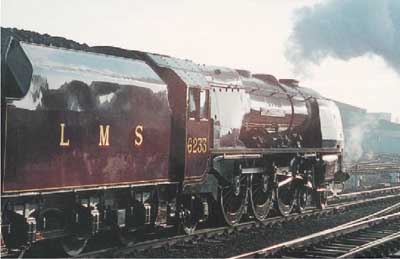1. The definition of railroad rolling stock
It is always useful at the outset of consideration of a subject to pause for a moment and to ponder the definitions, attributes range and scope of the matter.
Rolling stock used on railroads in the earliest days evolved from carriages and wagons which ran on highways to carry both people and bulk materials.
As early as the sixteenth century wooden wheeled carts were used in mines and quarries running on longitudinal timber rails.
With the progressive evolution of the skills and crafts of the wheelwright, metalworker and the ironmaker, wheels improved through various phases from simple rough turned wooden spools through spoked and rimmed construction to fully cast and turned metal wheels.
Similarly, body construction and springing, particularly for passenger carrying vehicles, relied very heavily on the experience gained in the construction of stagecoaches in the seventeenth and eighteenth centuries.
At the end of the eighteenth century, horse drawn trams running on metal rails began to appear in a number of European cities. These horse drawn tramways were literally to pave the way for development of railroads when steam power began to be developed early in the 1800's. One has only to look at illustrations of early passenger coaches to see how closely they resemble the road vehicles of the previous century. (see FIG. 1.)
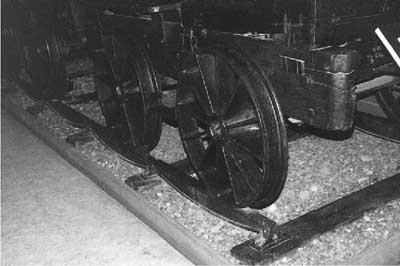
FIG. 1. Early flanged wheels on iron rails.
As railroad experience was gained, the design of rolling stock also evolved.
Springing, body structure, wheels and axles all are subject to varying loads and stresses, when comparing slower speeds on rough roads to much faster speeds on railroads, with a comparatively smoother ride.
Railroad rolling stock generally runs on hard wheels on hard rails. The wheels are not only supported by the rails but are guided by them. The only exception to this is for a small number of metros where rubber tyres have been introduced. In this case the supporting function of the rail may be separated from the guiding function.
In all cases, railroad rolling stock will transmit vertical, horizontal and longitudinal forces to the track and its supports. Most railroads have adopted twin rails and flanged wheels. Forces are transmitted to the rail structure either by direct bearing on the rail top from the wheel tire, or by bearing laterally through the flange, or by longitudinal friction. Potential 'overturning' forces caused by centrifugal force on curves, coupled with wind forces on exposed locations are resisted by vertical dead weight and super-elevation or 'cant' on curves.
2. The range of railroad rolling stock
Today there is a very wide range of rolling stock used throughout the world on different railroads. This range includes the following basic types:
- Locomotives
- Freight wagons
- Passenger coaches
- Multiple units (with motive power in-built)
- Metro cars (usually multiple units)
- Light rail/Trams (usually articulated units)
- Railborne machines (cranes, tampers etc)
- Inspection and maintenance trolleys
3. The evolution of steam motive power
As has been mentioned previously, the harnessing of steam power in the late eighteenth and early nineteenth centuries was the springboard for the development of railroads throughout the world. The concept of running hard rimmed flanged wheels on narrow metal rails had been tried out in the mines and quarries and found to be both workable and advantageous.
The main limitation to the effectiveness of using plate-ways, railroads or tram-ways was the adequate provision of haulage power or what became known as 'motive power'. Walking pace motive power was first provided by men and horses and later in some places by stationary engines driving winches for cable hauled cars. As the design of wheels, axles and bearings steadily improved, towards the end of the eighteenth century, heavier loads could be moved and rail borne movable steam 'locomotives' became a possibility.
The first steam hauled train was operated by Richard Trevithick's steam locomotive in South Wales in 1804. While this locomotive seems to have worked quite well on a mine tramway, the cast iron plates that formed the track proved to be inadequate for the heavier loads and impacts.
Hard on its heals, William Hedley's 'Puffing Billy' built in 1813, ran on a tramway near Newcastle-on-Tyne giving successful service for over forty years.
The first use of steam for a passenger train was George Stephenson's
'Locomotion' on the Stockton and Darlington Railroad in 1825.
There is a wall plaque at the original railroad station at Stockton which reads:
'Here in 1825 the Stockton and Darlington Railroad Company booked the first passenger thus marking an epoch in the history of mankind'.
The first public railroad to use steam motive power exclusively and to run a regular passenger service was the Liverpool and Manchester Railroad which commenced operations in 1829. This railroad was perhaps the first to have the essential elements of a modern railroad. All trains were locomotive hauled, running to a timetable, operated by company staff and only stopping at stations manned by its own staff. The railroad linked the two cities and was only 38 miles long, taking about two hours six minutes to do the journey. This average speed of 18 mph seems extremely slow to us but when compared to walking, running, or going by narrow-boat or stagecoach, was a substantial improvement.
What is even more amazing is that fourteen short years later Daniel Gooch, locomotive superintendent of the Great Western Railroad, drove Prince Albert home from Bristol to London in about the same time, a distance of about 118 miles! The average city to city speed on that journey of 57 mph is still remarkable and could not be achieved today by driving from Bristol to London, even with the fastest car, without breaking the speed limits! During the rest of the nineteenth century, railroads continued to develop and spread to all parts of the civilized world. With this development, both steam locomotives and all types of rolling stock grew in size and complexity.
Steam power dominated traction on most of the worlds railroads in the first hundred years or so. Indeed, until the 1880's steam was the only form of motive power that was considered viable for railroads. Even the so called 'atmospheric' railroads still relied on stationary steam engines to provide their power.
In the very earliest days, even at the time of George Stephenson's 'Rocket', boilers were fitted with multiple tubes, water space round a fire box and a fire which was drawn by the exhaust steam blasted up the chimney. Most locomotives had two cylinders linked to the large driving wheels by external connecting rods.
Cylinders were normally inclined at an angle to the horizontal and drove only one pair of wheels. Eventually cylinders were placed horizontally in a forward location and the driving power was linked to all the 'driving wheels' by various cranks and connecting rods.
There was also a great deal of activity in the design and evolution of valve gear, slides, pumps and pistons which all added to both the efficiency and the complexity of steam locomotives. Steam traction is simple in essence and some complexity led to more difficulties and problems than were solved.
The invention of 'super-heating' of steam in the late nineteenth century led to adoption of this feature in later steam locomotives giving rise to higher efficiency but also a need for better maintenance, particularly of boilers and tubes.
Early underground railroads adopted steam power for hauling trains because at that time there did not appear to be any practical alternative. The first underground railroad in the world was opened by the Metropolitan Railroad Company in 1863 between Paddington and Farringdon, London. By that time many hundreds of miles of main line railroad had been built around the world and over thirty years experience had been gained in the design, manufacture and operation of steam locomotives.
This original section of the new line, together with its later extensions (now the Circle Line), was constructed using the 'cut-and-cover' method.
As the construction was only at a shallow depth, openings were left wherever possible in an attempt to ensure that steam, smoke and fumes were adequately ventilated.
The original intention was to use conventional steam locomotives on this line burning no fuel on the underground sections but relying on the 'head of steam' and heating up only at the end of the comparatively short underground section.
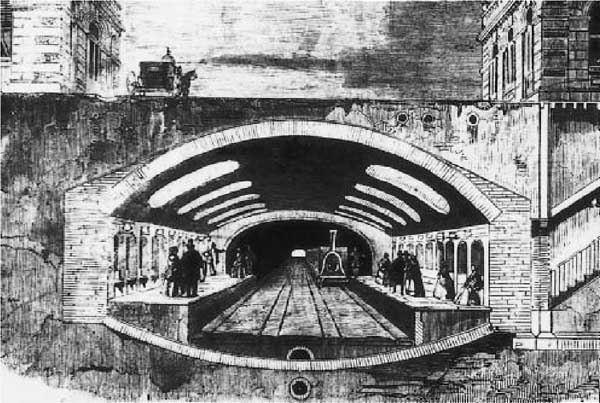
FIG. 3. Euston Square Station showing ventilation openings.
When the line was opened, it was found that conventional locomotives caused distress to passengers and staff due to the discharge of carbonic oxide gases. Some relief of the problem was found in construction of condensing engines but clearly some other form of motive power would be desirable underground. The London commuter had to suffer the inconvenience of steam locomotives in confined spaces for another three decades or so before a satisfactory alternative was found.
4. The advent of electric traction
The possibility of electric traction was first demonstrated by a Scotsman called Davidson in 1834 but it was not until the Berlin Exhibition of 1879, that the idea was developed far enough to show that it could be a practical challenger to steam.
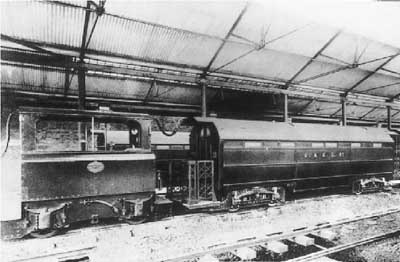
FIG. 4 An early underground DC electric locomotive.
The obvious advantages of electric traction over steam for underground railroads attracted the attention of many engineers and operators around the world in the last decade of the nineteenth century.
The first 'Tube' line to be built in London was the City and South London Railroad between King William Street and Stockwell in 1890 using electric traction. This was followed within ten years by the construction of the Central London Railroad from Shepherds Bush to Bank, also using electric traction. Other tube lines followed rapidly all of which were incorporated into today's London Underground.

FIG. 5 A modern multiple unit tube train.
Most of these early tube lines followed the main line practice of a single locomotive pulling non-powered carriages or cars. The City & South London locomotives were small four wheeled vehicles whereas the Central London Locomotives were much larger 'camel back' design with four driving axles mounted in two bogeys.
During the first decade of the twentieth century, all of the London tube lines departed from the principle of single locomotive hauling to using a number of motorcars along the length of the train. This has considerable advantage for rapid transit trains, not the least of which is to distribute both traction and braking along the full length of the train. This has the effect of improving both acceleration and braking which is important on lines where there are frequent stops.
For the same reasons many main line railroads have now come away from the use of locomotives for suburban and stopping services and have adopted multiple units with motors distributed along the length of the train.
5. Development of electric traction
The suburban and underground railroads that were built or electrified in the early part of the twentieth century adopted a medium voltage direct current supply system which involved fairly costly fixed equipment but kept the locomotives relatively simple and cheap. A large number of transformer 'sub-stations' were involved with comparatively heavy conductor rails set at track level. Technology was very similar to the early electric tramways which were also powered with direct current.
In the UK, London Underground and a large part of the Southern Region of British Railroads adopted DC electric traction many years before the rest of BR converted from steam power to diesel power or seriously considered large scale electrification.
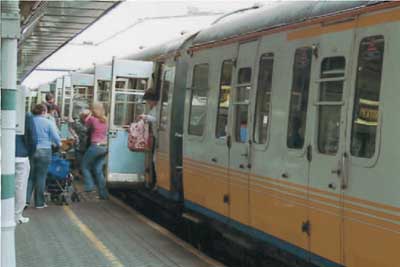
Fig. 6. Southern Region (BR) Multiple DC stock.
Overhead supply of high voltage alternating current was pioneered largely in Switzerland after the First World War and by the 1930's became the normal system of electrification on the Continent.
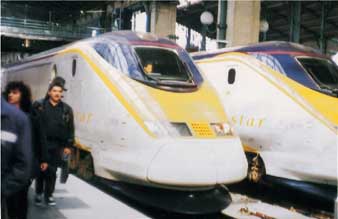
FIG. 7. Channel Tunnel stock which can run on either third rail DC or
overhead AC.
High voltage AC electrification was not introduced to British Railroads until after the Second World War. Since then, it has become the preferred system for surface railroads. High speed AC electric locomotives have a high power/weight ratio as they carry no heavy fuel.
6. Diesel traction
This alternative form of motive power was invented by a certain Doctor Diesel of Berlin in about 1893. There are certain technical problems associated with applying diesel power to railroads. These mainly relate to the fact that the engine must be turning even when the locomotive is stationary, unlike the steam engine which has latent power, provided the head of steam is up. In road vehicles, this can be overcome by the familiar mechanical device of introducing a clutch and gearbox. This works well for vehicles of moderate horsepower but is unsatisfactory for more powerful engines.
Because of this drawback, the diesel engine was relatively late in coming to the railroad scene. It was not until the 1930's and later that the diesel began to be taken seriously and only in the 1950's that diesel and electric traction finally ousted steam in most parts of the developed world.
Two main methods of coupling the diesel engines to the driving wheels were evolved and still remain today.
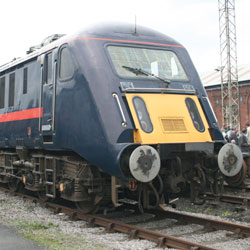
FIG. 8 A modern Diesel-electric locomotive.
The first involved hydraulic drive which had modest success. Most of this type of locomotive originated from Germany and many are still running today.
Without doubt however, the standard diesel locomotive today throughout the world is the diesel-electric. One could describe this as an electric locomotive with its own on-board diesel generator power station.
The solution of the drive problem is complicated and therefore expensive.
As a very rough indication of this, the first cost of a diesel locomotive is about three times the cost of a steam locomotive of similar power. However the real savings come to light when considering the 'whole-life' costs involved in running and maintaining steam verses diesel.
In particular, steam requires many man-hours each day before and after working to get up the fire and rake out the ashes etc. The diesel locomotive has immediate push button power and has a much lower requirement for 'down-time' for regular maintenance.
7. Evolution of wheel layout
The earliest steam locomotives had two or three axles, one or more of which carried the driving wheels. Richard Trevithick's locomotive had an ingenious arrangement which connected the two driving axles to the driving pistons by means of a series of large cog wheels.
In many cases, the inclined cylinders drove one pair of large driving wheels directly and these were sometimes linked to other wheels with 'connecting' rods. As locomotives grew in size, weight and power additional wheels were introduced largely to carry the extra weight of water and coal which was needed for the ever increasing journey length. Locomotive designers needed to get as much weight onto driving wheels as reasonably possible to avoid wheel slipping or spinning, a characteristic of steam engines.
Heavy individual axle loads however were most undesirable from the point of view of supporting brides and structures. As in all engineering design, this has always meant that some compromise needs to be made between operational desirability and practical structural considerations.
The introduction of electric and diesel multiple units has allowed the use of many more driving wheels along the length of a train, thus reducing the adhesion, acceleration and braking problem.
8. Changes in locomotive maintenance practices
Steam traction involved the procurement of many extra locomotives because of the large amount of cleaning, lubrication, descaling and minor repairs that were necessary.
This resulted in all engines spending a considerable proportion of their life in the shops or sheds instead of out on the railroad pulling trains.
Additionally there was a lot of time spent in firing and other preparation before each day's working.
It was these considerations, amongst others, that led in the UK and many other countries to the demise of steam and the gradual introduction of diesel and electrical power, since the Second World War.
Diesel and electrical power has also enabled designers to dispense with large driving wheels and to introduce power driven bogies.
Also in recent years both locomotives and multiple units have been designed with motive power packages and self contained units that can be removed or replaced for maintenance. This has the effect of reducing yet further the amount of time that trains or locomotives have to be out of service.
9. From passenger 'Carriages' to the modern carbodies
Early sketches show that the Liverpool and Manchester Railroad started operations in 1829 using stage-coach bodies mounted on four wheeled trucks.
Third class passengers were often carried in simple wagons very little different from 'cattle trucks'. Sometimes as many as three or four stage-coach bodies were mounted on one truck with the seats 'facing or back' towards the engine. The doors on these early coaches were on each side, one per coach compartment, with no connection between the compartments.
The carriages on suburban stopping trains on BR retained an element of the same layout with individual unconnected compartments and single 'slam' side doors for well over a hundred years.
As railroad journey times and distances increased, this quickly evolved for 'express' trains, with the introduction of a side corridor, to the basic carriage layout which remained normal for main line railroads in the UK to the 1960's.
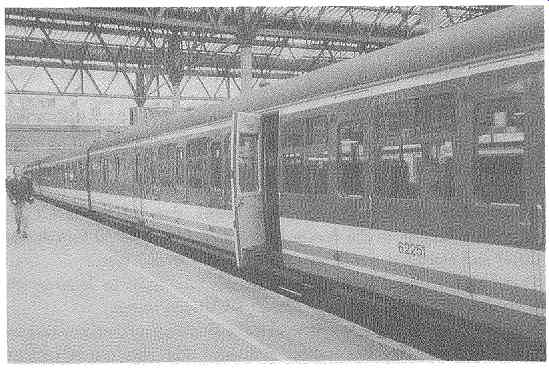
FIG. 9 Typical 'Slam door' compartment stock.
Early American railroads, however, adopted the open coach with passengers sitting each side of an open corridor, boarding and alighting from the train through doors at the ends.
Many of the world's railroads have now adopted the open plan for both main line and suburban services with doors at carriage ends and walk- through connection down the full length of the train.
Most metros and light rail systems have open plan layouts in the cars.
In this case however boarding times are critical and doors only at car ends would be too restrictive. In this case there is a very fine balance between the number of doors and the number of seats provided.
The levels and curvature of platforms also has an effect on the design of cars and this varies considerably around the world. Increasing consideration is being given to the need to accommodate disabled passengers, especially those in wheelchairs.
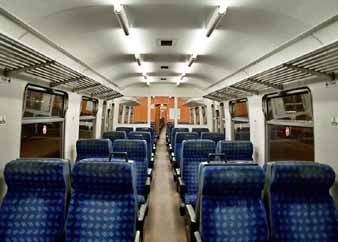
FIG. 10 Modern open plan Main Line coach. [coming soon]
FIG. 11. Docklands Light Railroad stock. [coming soon]
10. Carbody structures
Since the earliest days of railroads, carbody structures have evolved and become considerably stronger, lighter and more economic. As mentioned previously, the earliest carriages were largely of wooden construction. These proved to have a very low crash resistance when accidents occurred with a high rate of injury and loss of life.
As early as 1840, in the UK, the Railroad Inspectorate was set up to inspect newly constructed railroads and to certify fitness for public travel.
Various accidents investigated by the Inspectorate over the years have led to progressively higher standards being set for the design of rolling stock.
The first stage was to introduce a wrought iron and later steel underframe which fully supported the wooden superstructure. This system lasted well and was still being used in new stock up to the 1950's. The main drawback was that all the strength was in the chassis which performed well in collisions but body work splintered, still causing much loss of life and physical injury.
The next stage was the use of a steel underframe with steel or aluminum framing to the superstructure. This performed much better in crashes but the whole design was getting very heavy and expensive.
Modern cars and coaches are designed on the 'Monocoque' principle. In this case the whole structure is designed as a single monolithic unit, spanning between the main bogie supports. The structure then takes all the bending, shear and torsion stresses as an entity.
The final form is usually a composite of aluminum extrusions and welded stainless steel with a 'stressed skin'. All loads and stresses are distributed between the various components. The resulting design is considerably lighter than the previous design and is much akin to aircraft structural design. The lighter design coupled with higher stresses and repeated loading means that fatigue considerations become increasingly important.
Summarizing, these developments of carbody design over the last almost two centuries are characterized by:
- Lower mass
- Higher stiffness
- Higher strength
These rolling stock characteristics lead to:
- Lower energy consumption
- Greater crashworthiness
- Higher passenger comfort
- Higher passenger/carbody mass ratio
11. Main line train performance issues
When considering the engineering of a railroad from the rolling stock point of view, train performance demands and issues need to be fully considered.
These vary according to location and whether or not it is Main line, Metro or Light Rail.
The performance issues on Main Line railroads for consideration are as follows: Is the traffic mainly one type (e.g., high speed express passenger) or mixed speed and type? What will be the impact on the long distance passenger carrying capacity of the railroad of slow freight and stopping trains? What capacity will the signaling allow? (This will depend largely on such factors as the length of the signaling sections and whether there is uni-directional or bi-directional signaling.) Are there many passing loops or 'slow line' platforms at stations of secondary importance, to allow expresses to pass? What acceleration, braking characteristics and tractive effort is required to ensure that trains can work to desirable timetables? What are the maximum gradients on the line? (These will effect the previous consideration greatly.) How many speed restrictions are likely and what recovery will be required of time lost?
12. Train performance issues on metros and light rail
Generally metros and light rail systems only carry passengers and there is not therefore the added complication of 'mixed' traffic. Similarly, in most cases, there is no segregation of express and stopping trains to complicate matters. The main concern is to provide trains which will closely match demand at various times of the traffic day in the most economic manner.
The main issues therefore are:
What capacity is required at various times?
What are the achievable acceleration and deceleration rates?
What 'dwell time' is required at stations?
What top speed is necessary?
How can energy be conserved in normal running conditions e.g., by coasting ?
How much scope is required for recovering lost time in the peak due to delay?
For light railroads only, what additional factors need to be taken into consideration for any lengths of track which are incorporated into the highway and where 'shared running' takes place? Once all these considerations have been fully investigated, decisions can be made on the type and number of different units of rolling stock that is required to run the railroad. To this must be added extra stock to allow for the fact that there will always be some vehicles on programmed repair and maintenance as well as others out of service for unplanned reasons or mishaps.
With modern rolling stock and proper maintenance procedures, this extra proportion should be able to be kept to not more than a quarter, depending on the size of the fleet.
It can often be shown that a small amount of extra capacity, both in tractive effort and braking, can play dividends in the long run and allow overall economies in energy.
For relatively short distances between stops, the timetable for trains running normally should allow for a pattern of motoring up to maximum allowable speed and then coasting for a period before braking for the next station. This pattern is less demanding on energy than flat-out speed and maximum braking which can however be resorted to if lost time needs to be regained due to delay.
13. Freight rolling stock
Early railroads were characterized by 'goods' trains of a very mixed variety.
In the days of steam, it was commonplace to see long trains of mixed wagons carrying coal, stone, timber, slate and many other basic materials needed both in the large cities and in the smaller towns. The operation of such trains was often slow and labor intensive, involving marshalling yards and painstaking 'shunting' and off-loading.
Economic considerations have caused such operations now to be a thing of the past. However, railroads are still an excellent way of moving freight especially in large countries where distances are much greater. Even so approaching two hundred million tons of freight a year is still transported on the railroads in the UK.
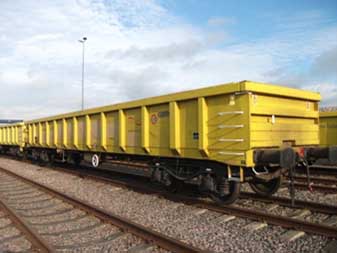
FIG. 12. Specialized freight wagons
Freight wagons in recent years have tended to become specialized to the material they are handling. This is certainly the case for the transport of bulk cement, china clay, crushed stone, coal, oil, steel, fly-ash and some manufactured items like cars.
In recent years, specialized fixed formation trains have also been used in the UK, known as freightliners, which run on regular routes from ports and various factories carrying standard containers.
Some of the larger dedicated bulk carrying vehicles that run in the UK have twin wheeled bogies and a total 'all-up' laden weight of up to 100 tons.
This has the effect of producing a train which imposes 25 ton axle loadings down the full length of the train. This is very punishing to the supporting track and structures and must be taken into account by all engineers engaged both in vehicle and bridge design.
14. Specialized engineering rolling stock
Railroads were originally very labor intensive. This applied particularly to the civil engineering activities involved in both laying and maintaining the permanent way and its supporting earthworks.

FIG. 13 Ballast tamping machine
Early etchings of railroad building activities show that a great deal was achieved by sheer weight of manpower assisted only by hand tools, wheelbarrows and the trusty horse. Contractors often laid temporary track on which they used their own small steam locomotives hauling simple wagons.
On these tracks some used simple steam powered mobile cranes but that was about the limit of mechanical plant available.
On railroads today engineers have designed many items of plant, both stationary and mobile, which reduce considerably the manual tasks associated with keeping the track up to a good standard.
All specialized engineering rolling stock has to comply with all the safety, signaling and operational requirements on the railroad. Some are self propelled and can be treated as a train operating in its own right. Other plant is hauled to site as part of a train and only operated under its own power within the confines of a complete possession of the railroad.
Specialized vehicles included the following:
- Ballast Tamping Machines
- Ballast Cleaners
- Ballast Hopper Wagons
- Stone Blowers
- Mobile Rail Cranes
- Long Welded Rail Cars
- Cleaning Trains
- Inspection cars/trolleys
- Snow and Leaf clearing vehicles
- Concreting trains
- Drain/sump cleaners.
- Battery cars/Ballast locomotives
- Tunnel cleaners
- Platelayers' trolleys
- Personnel carriers
- Track Recording Cars
- Rail Grinders
- Special flat cars/bolster wagons for track
15. Manufacturing methods
Originally railroad rolling stock was manufactured using simple engineering skills with most components being 'bespoke'. Manufacture was labor intensive which was relatively cheap. In more recent years multiple engineering skills have become involved with more specialization, complex design and use of standard components. Skilled labor has become progressively more expensive in real terms. Additionally there have been a number of major changes in manufacturing technology. These changes include the following:
- Riveting has been replaced by welding
- There is an increase in the use of aluminum and stainless steel
- Plastics have been introduced
- There is a greater use of jigs and fixtures
- Computerized manufacture and production control
- Introduction of Quality Assurance
Prev. | Next
Top of Page | Article
Index
